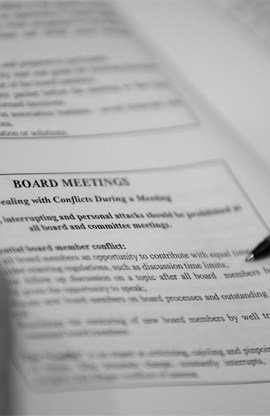Associations should be working on their 2025 budgets! There are several things for Associations to consider when starting the budgeting process, especially if there have been significant changes in the community or if the community has undergone financial hardship.
A community association budget is a summary based on the anticipated income and expenses for each fiscal year, broken down into either specific items or categories. Most associations have the calendar year as their fiscal year, which is why this is the perfect time to start looking at next year’s budget.
The first step to preparing an annual budget should be to check the association’s governing documents to determine the requirements for preparing the annual budget. This is important because the governing documents may require that members participate in the budgeting procedure, while others leave the responsibility solely to the Board.
The responsibility of who prepares the first draft also depends on the association. Typically, if an association has a management company, the manager prepares a draft budget for the Board to consider. Managers do this in different ways; some prefer to have the association’s treasurer assist and provide input. If the association is self-managed, the treasurer and president will usually prepare the budget together.
Mulcahy Law Firm, P.C. recommends the following steps for preparing a budget:
- Review last year’s budget and records and compare differences between what was actually spent. This is an opportunity to assess how accurate your former budget was, see where you may need to allocate more funds, and realize where you had funds leftover.
- Evaluate the needs of the community for the upcoming year. This is where you determine if there are any urgent and immediate needs that will certainly need to be addressed in 2025.
- Assess the needs of the community for the future. Figure out some of the needs of your community that may be coming down the line further in the future, look beyond 2025.
- Ask questions of the association’s vendors. You’ll want to know if price increases are coming in 2025.
- Review and analyze the association’s contracts; Are the current contracts still meeting the association’s needs?
- Receive and analyze information obtained from the vendors to determine the amount to be included in the budget.
- Plan for the unexpected. The association should include a line item for contingencies which allow the association’s budget to anticipate unforeseen needs.
- Budget the amount to be placed in each line item after concluding the research. Consider the anticipated revenue and see if estimated expenses are in line with anticipated revenue.
If the estimated expenses exceed the expected revenue, the association will have to decide whether to increase assessments or find places to reduce expenses. The budget should then be reviewed and presented for approval either to the rest of the board, or the membership, depending on what the documents require. Keep in mind to present the budget with backup information on line items were determined and provide information in a simple and accurate way.
Arizona law provides that a planned community budgets must be approved by the board and that the budget must be provided to all members in a condominium within 30 days of the budget’s approval. Also for condominiums, the members are required to ratify the budget unless the governing documents expressly authorize the board to adopt and amend the annual budgets.
The budget should be split into the operational budget and the reserve budget. While this information is most pertinent to the operational budget, contributing to the reserve budget should be part of each year’s operational budget. It’s important to keep contributing to the reserve fund for future capital expenditures such as painting, replacing roofs, common area improvements, etc.
If your association needs guidance through the budgeting process, Mulcahy Law Firm, P.C. is here to help! Send us a message at info@mulcahylawfirm.com

